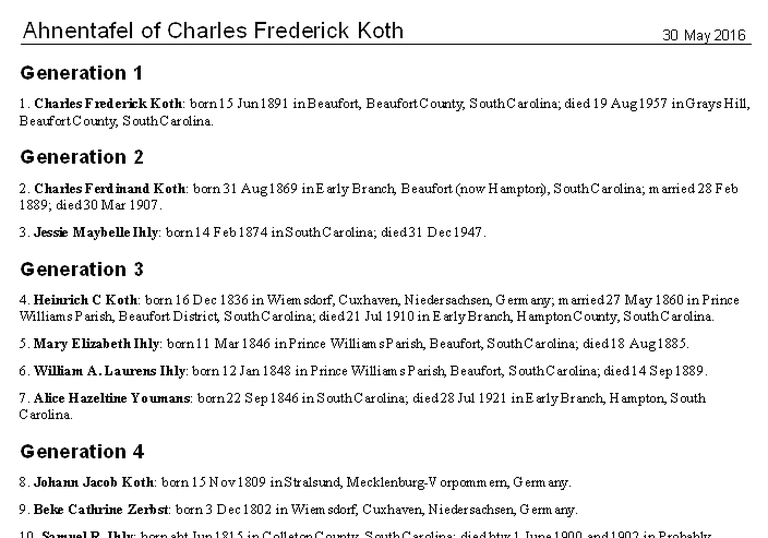
 From a German word meaning “ancestor table,” an ahnentafel is an ancestor based genealogy numbering system. An ahnentafel is an excellent choice for presenting a lot of information in a compact format.
From a German word meaning “ancestor table,” an ahnentafel is an ancestor based genealogy numbering system. An ahnentafel is an excellent choice for presenting a lot of information in a compact format.
What is an Ahnentafel?
An ahnentafel is basically a list of all known ancestors of a specific individual. Ahnentafel charts use a standard numbering scheme which makes it easy to see—at a glance—how a specific ancestor is related to the root individual, as well as easily navigate between generations of a family. An ahnentafel also typically includes (if known) the full name, and dates and places of birth, marriage, and death for each listed individual.
How to Read an Ahnentafel
The key to reading an ahnentafel is to understand its numbering system. Double any individual’s number to get his/her father’s number. The mother’s number is double, plus one. If you created an ahnentafel chart for yourself, you would be number 1. Your father, would then be number 2 (your number (1) x 2 = 2), and your mother would be number 3 (your number (1) x 2 + 1 = 3). Your paternal grandfather would be number 4 (your father’s number (2) x 2 = 4). Other than the starting person, males always have even numbers and women, odd numbers.
What Does an Ahnentafel Chart Look Like?
To look at it visually, here is the layout of a typical ahnentafel chart, with the mathematical numbering system illustrated:
root individualfather (1 x 2)mother (1 x 2 +1)paternal grandfather (2 x 2)paternal grandmother (2 x 2+1)maternal grandfather (4 x 2)maternal grandmother (4 x 2+1)paternal grandfather’s father – great grandfather (4 x 2)paternal grandfather’s mother – great-grandmother (4 x 2+1)paternal grandmother’s father – great-grandfather (5 x 2)paternal grandmother’s mother – great-grandmother (5 x 2+1)maternal grandfather’s father – great-grandfather (6 x 2)maternal grandfather’s mother – great-grandmother (6 x 2+1)maternal grandmother’s father – great-grandfather (7 x 2)maternal grandmother’s mother – great-grandmother (7 x 2+1)
You may notice that the numbers used here are exactly the same as you’re used to seeing in a pedigree chart. It is just presented in a more condensed, list format. Unlike the brief example shown here, a true ahnentafel will list each individual’s full name, and dates and places of birth, marriage and death (if known).
A true ahnentafel includes only direct ancestors, so non-direct line siblings, etc. are not included. However, many modified ancestor reports do include children, listing non-direct line children under their respective parents with roman numerals to indicate birth order in that particular family group.
You can create an ahnentafel chart by hand or produce it with your genealogy software program (where you may see it referred to as an ancestor chart). The ahnentafel is great for sharing because it only lists direct line ancestors, and presents them in a compact format that is easy to read.
